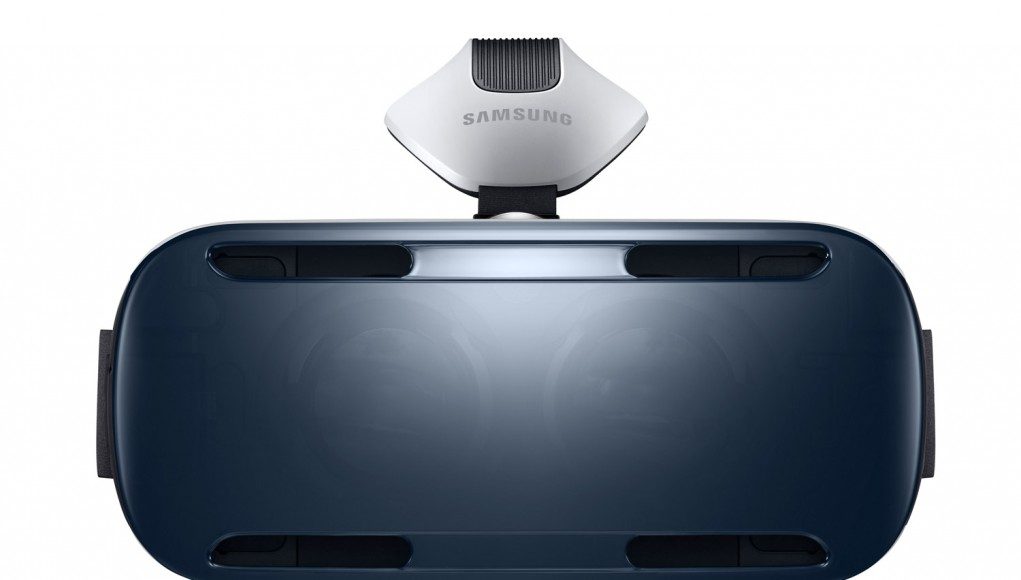Samsung’s Gear VR is close to release, if recent rumours are to be believed, and it’s certainly hotly anticipated. At a recent SFVR meetup, Sixense demo’d a solution to the Note 4 powered VR headset’s one glaring feature omission – positional tracking.
Full Wireless VR, Now with Positional Tracking

At Oculus Connect this year, John Carmack’s fascinating and incredibly frank talk on his time at Oculus, working with Samsung to create the company’s inaugural entry in to the VR headset arena, Gear VR. The headset, rumoured to make its retail debut next month, is a remarkable feat of software and hardware engineering and a testament to the strength of Oculus and Samsung’s collaboration. With sub 20ms motion-to-photon latency and a low persistent 1440p panel at 60Hz, those that have tried the device have been impressed.
 However, having extolled the virtues of positional tracking and it’s motion sickness beating properties, the lack of such a seemingly crucial feature on Gear VR seemed at odds with the level of experience it delivered elsewhere. A fact Carmack acknowledged in this Oculus Connect talk, also outlining his ideas for solving this not insignificant technical hurdle, but ultimately admitting that they weren’t there yet.
However, having extolled the virtues of positional tracking and it’s motion sickness beating properties, the lack of such a seemingly crucial feature on Gear VR seemed at odds with the level of experience it delivered elsewhere. A fact Carmack acknowledged in this Oculus Connect talk, also outlining his ideas for solving this not insignificant technical hurdle, but ultimately admitting that they weren’t there yet.
See Also: John Carmack’s Brilliant Oculus Connect Keynote Goes ‘off Message from the Standard PR Plan’

So it was with great interest when a video of a recent SFVR (San Francisco Virtual Reality) meetup surfaced showing a presentation from Amir Rubin (skip to 2h 27m on the video above), CEO and Founder of Sixense, the company behind the Razer Hydra and more recently STEM motion control system. Amir used his time at SFVR to announce that Sixense had been working with Samsung and the Gear VR. Seems Samsung were keen to woo the LA based technology company as members of the Gear VR team flew to see Sixense, previously sceptical of mobile VR as a platform. What Samsung showed them “.. blew our minds” and convinced them that the Gear VR was not only a viable device for delivery virtual reality experiences, but that Sixense should be involved in solving the puzzle of that missing positional tracking.
See Also: Sixense STEM Kickstarter Crushes Goal on Day One, Wireless Base Station Stretch Goal Announced
Sixense’s Rubin went on to detail the company’s success with not only getting STEM tracking modules working with Gear VR, but claimed that they’ve managed to achieve around 7.5ms latency between STEM and the Note 4 via Bluetooth. This figure is impressively close to the company’s ‘full fat’ PC targeted system, which touts 4.2ms of latency. To bolster these claims and to cement the company’s dedication to Gear VR, the STEM systems due to ship next month to Kickstarter backers around the world will be delivered with Android support, allowing Gear VR developers to get right on creating STEM based Gear VR applications.
 Although Rubin claims the STEM pairing is restricted currently to just one STEM pack, it means that right now applications can be built that leverage’s the freedom this advancement enables. Gear VR is already a tantalising prospect as a wireless VR headset, anyone who’s used the Oculus Rift will know that cables are an impediment to immersion. So now you can move around VR spaces unfettered and with positional tracking.
Although Rubin claims the STEM pairing is restricted currently to just one STEM pack, it means that right now applications can be built that leverage’s the freedom this advancement enables. Gear VR is already a tantalising prospect as a wireless VR headset, anyone who’s used the Oculus Rift will know that cables are an impediment to immersion. So now you can move around VR spaces unfettered and with positional tracking.
Amir also let the assembled set of enthusiasts know that Sixense would be present at the Samsung Developer Conference (SDC) Nov 11-13, letting attendees experience their suite of demo’s with positional tracking delivered via STEM.
Road to VR’s Ben Lang will not only be reporting from the Samsung Developer Conference, but is also to moderate one of the two VR specific panels too along with Cymatic Bruce.
You can find more on the San Francisco VR Meetup events here.







